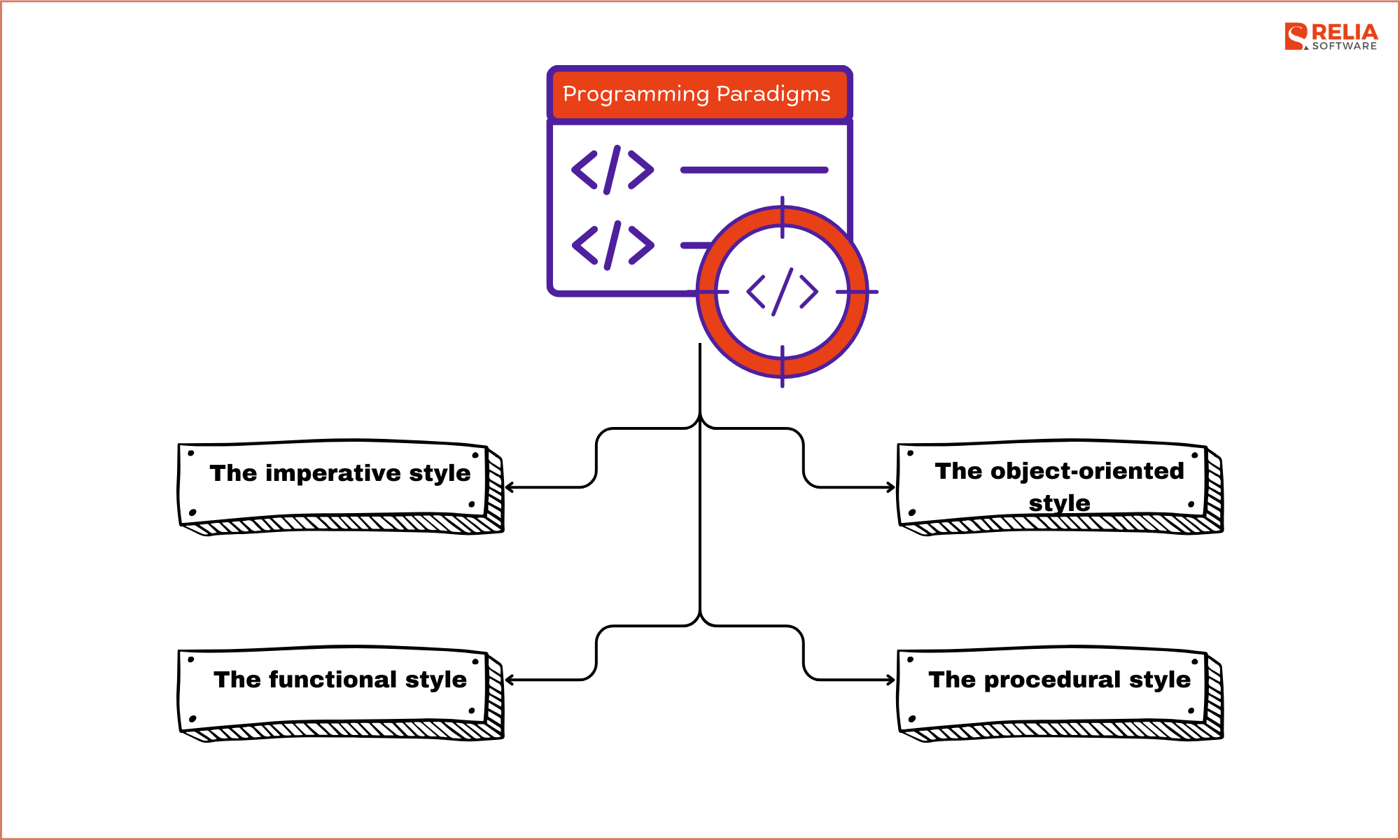Python is a computer language that enables the development of several applications. For projects involving deep learning, machine learning, and artificial intelligence (AI), developers think it's a wonderful option. This article describes 8 reasons why Python is favored by programmers who work in machine learning.
>> Read more:
- Which Web Development Language Should You Learn in 2023?
- Flask Vs Django: Which Is Better For Mobile?
- Python App Development Company
A Fantastic Library Ecosystem
One of the key causes that Python is the most often used programming language for AI is the fantastic selection of libraries. A library is a module or group of modules that have been made available from different sources, like PyPi, and that contain pre-written code that allows users to access particular capabilities or do particular tasks. Developers don't always have to design these components from scratch because Python libraries provide the basic building blocks.
You can access, manipulate, and transform data using Python's libraries, which is essential for machine learning (ML) applications. These are some of the most popular Python libraries and their functions:
-
Scikit-learn can handle fundamental ML algorithms including clustering, classification, regression, linear and logistic regressions, and others.
-
Pandas for advanced data analysis and structures. The data can be combined and filtered, as well as gathered from other outside sources like Excel.
-
Keras is used for deep learning. It takes advantage of the computer's central processing unit (CPU) and graphics processing unit (GPU), resulting in fast computations and prototypes.
-
TensorFlow is used to create, train, and use artificial neural networks for deep learning using enormous datasets.
-
Matplotlib is used for making 2D plots, histograms, charts, and other visualizations.
-
NLTK for working with computational linguistics, processing, and processing natural language.

Python libraries provide the basic building blocks. (Source: Canva)
Low Entrance Threshold
Working in the ML and AI sector requires dealing with a lot of data, which you must analyze in the most practical and efficient manner. Since learning Python doesn't need a large time commitment or specialized knowledge, more data scientists will be able to pick it up and start using it for AI development.
The similarity between the Python programming language and standard English makes learning easier. Due to the explicit relationships between the system elements and its simple syntax, it enables you to work with complex systems with ease. Python's emphasis on simplicity makes it appropriate for use in AI applications.
For instance, this program checks to see if a given number is prime. This is how the source code looks:
test_number = 407 # our example is not a prime number
# prime numbers are greater than 1
if test_number > 1:
# check for factors
number_list = range(2, test_number)
for number in number_list:
number_of_parts = test_number / number
print(f"{test_number} is not a prime number")
print(f"{number} times {number_of_parts} is {test_number}")
break
else:
print(f"{test_number} is a prime number")
else:
print(f"{test_number} is not a prime number")The code's output is that the test number is not a prime, as seen in the last row. Since the code is written in standard English, any native speaker should have no trouble deciphering its meaning.
Flexibility
Due to its adaptability, Python is a great tool for machine learning:
-
It gives users the choice of using scripting or OOPs.
-
Developers can make any changes without having to recompile the source code and can see the results right away.
-
Developers can accomplish their goals using a combination of Python and other languages.
Additionally, flexibility enables programmers to select the programming paradigms with which they are most comfortable and even combine these paradigms to best tackle various challenges.
-
The imperative style: consists of instructions that specify how a computer should carry out these instructions. In this method, you outline the sequence of calculations that will occur as the program's state evolves.
-
The functional style: is also known as declarative because it specifies the actions that must be taken. In contrast to the imperative approach, it declares statements as mathematical equations without taking the state of the program into account.
-
The object-oriented style: is based on the ideas of class and object, where classes are groups of related items. Although not fully supported, developers can nevertheless make use of this approach to some extent, despite Python's inability to do encapsulation.
-
The procedural style: is the most popular among novices because it breaks down activities into manageable steps. It is frequently used for selection, modularization, sequencing, and iteration.
Flexibility gives programmers the chance to take control of the situation and work in a comfortable setting, which reduces the likelihood of errors.

Platform Neutrality
Platform independence is the next benefit of Python for AI and ML development. Python's flexibility and ease of use make it a popular programming language. Machine learning programs written in Python can run on Windows, macOS, Linux, Unix, etc.
Developers just make a number of minor adjustments and update a few lines of code to convert the process from one platform to another in order to produce executable code for the platform of choice. Tools like PyInstaller allow developers to optimize their code for use across multiple platforms.
This again simplifies the procedure, makes it more convenient, and reduces the cost of testing on several platforms.
>> You may interested in: Top 8 Python Frameworks for Website Development in 2023
Readability
Due to Python's comprehensibility, any programmer can read, modify, or distribute the code of another. Professionals in AI and ML may communicate algorithms, ideas, and tools more effectively when there is no ambiguity, inaccuracy, or clashing paradigms.
Additionally, there are tools like IPython, an interactive shell that supports the work process by adding extra capabilities like testing, debugging, tab completion, and others.
Good Alternatives For Visualizing
We've already mentioned that Python has a wide range of libraries, some of which are excellent resources for visualization. For AI and machine learning developers, it's crucial to emphasize that being able to represent data in a human-readable way is essential for artificial intelligence, deep learning, and machine learning.
Data scientists can create plots, charts, and histograms using libraries like Matplotlib to improve data comprehension, presentation, and visualization. A variety of application programming interfaces also streamline the visualization procedure and facilitate the development of understandable results.
Community Assistance
Strong community support created around the programming language is always highly beneficial. Python is an open-source language, thus there are many resources available for programmers at all levels, from beginners to experts.
Both online and in Python communities and forums, where programmers and machine learning developers discuss faults, resolve issues, and assist one another, there is a wealth of Python documentation.
Both the Python programming language and the range of practical libraries and tools are entirely free.
Popularity
Because of the benefits mentioned above, Python is gaining popularity among data scientists. StackOverflow projects that Python will continue to gain popularity at least through the year 2025.
This makes it simpler to find developers and, if necessary, replace team members. Additionally, the price of their labor might not be as expensive as when they employ a less well-known programming language.
>> You may consider about other programming languages:
- What is Golang? Pros and Cons of Golang
- An Introduction to Ruby on Rails Framework
Conclusion
Many other languages can be used in AI projects, but the fact remains that Python is still the best and should be given significant consideration. It can be incorporated into the developer’s workflow alongside other popular tools. These days, developers use the Python programming language for machine learning projects due to its significant benefits.
>>> Follow and Contact Relia Software for more information!
- coding

